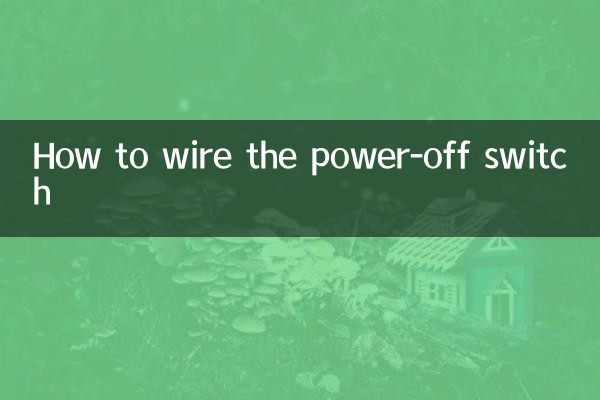How to wire the power-off switch
In modern household and industrial electricity use, the disconnect switch (also known as a circuit breaker or air switch) is an important part of ensuring circuit safety. Correct wiring can not only ensure the normal operation of electrical equipment, but also effectively avoid safety hazards such as short circuits and overloads. This article will introduce the wiring method of the power-off switch in detail, and attach relevant data for reference.
1. Basic types of power-off switches

Power-off switches can be divided into the following categories according to their uses and functions:
| Type | Purpose | Features |
|---|---|---|
| Unipolar switch | Control single phase circuit | Only cuts off the live wire, suitable for simple circuits such as lighting |
| bipolar switch | Control single-phase or two-phase circuits | Cut off the live and neutral wires at the same time for higher safety |
| Three pole switch | Control three-phase circuit | For industrial equipment or high-power electrical appliances |
| Leakage protection switch | Prevent leakage accidents | Equipped with dual protection functions of overload and leakage |
2. Wiring steps of power-off switch
The following is the standard wiring procedure for a power-off switch:
1.Power off operation: Before wiring, be sure to turn off the main power supply to ensure safe operation.
2.Identify terminal blocks: A power-off switch usually has an "incoming line end" (marked LINE or L) and an "outgoing line end" (marked LOAD or L1).
| Terminal name | Function |
|---|---|
| LINE (incoming line) | Connect the power input cable |
| LOAD (output terminal) | Connect load device wires |
3.Wiring operation:
- Single-pole switch: Connect the live wire to the LINE terminal and the load wire to the LOAD terminal.
- Bipolar switch: The live wire and the neutral wire are connected to the two interfaces of the LINE terminal respectively, and the load line is connected to the LOAD terminal.
- Leakage protection switch: An additional ground wire (PE wire) needs to be connected.
4.Fix and test: After the wiring is completed, tighten the screws and power on to test the switch function.
3. Frequently Asked Questions and Precautions
| question | Solution |
|---|---|
| Switch tripping frequently | Check for overload or short circuit |
| No power after wiring | Check whether the incoming line terminal is powered on and whether the wiring is loose. |
| Leakage protection failure | Test whether the ground wire is connected correctly |
Things to note:
- Wires that meet specifications (such as copper core wire) must be used.
- Avoid exposing wire ends when wiring to prevent short circuit.
- It is recommended to be operated by a professional electrician. Non-professionals should not try it by themselves.
4. Wiring diagram (taking bipolar switch as an example)
| Power terminal | switch terminal | Load side |
|---|---|---|
| Live Line (L) | LINE(L) | Load live wire |
| Zero line (N) | LINE(N) | Load neutral line |
Through the above steps and table data, you can clearly understand the wiring method of the power-off switch. If you still have questions, it is recommended to consult the product manual or consult a professional.

check the details

check the details